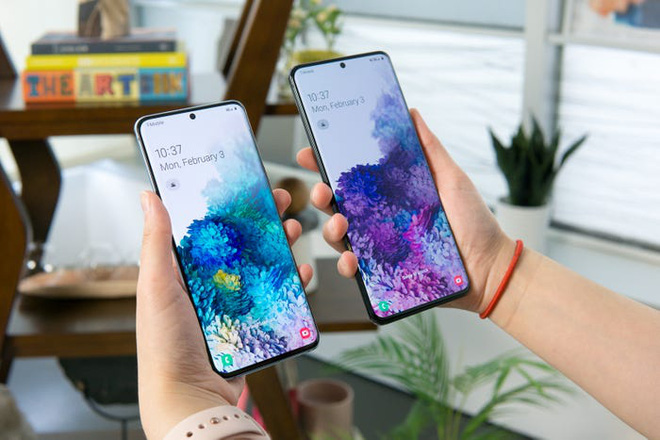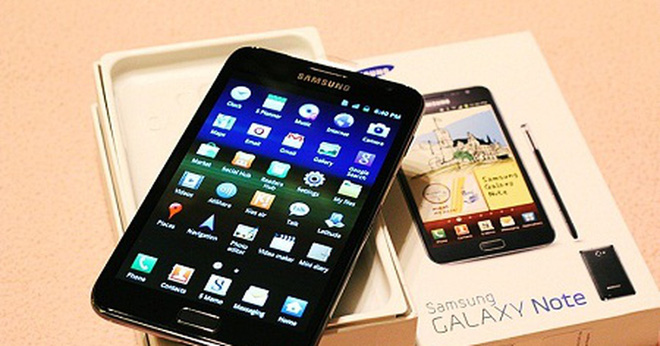It used to be an ‘indicator of the future’ but why the current Galaxy Note line seems to be no longer ‘original’
- Tram Ho
Samsung’s first Galaxy Note phone, released in 2011, was seen as the device that marked the transition of the smartphone market to devices with large screens. While most manufacturers at the time, like Apple, were proud of the downsizing technology to make mobile devices more user-friendly in the early smartphone era, Samsung pioneered the idea that phones should get bigger, not smaller.
Samsung’s Galaxy Note series then caught the spotlight with a larger screen, bigger battery, more powerful specs, and of course, an S Pen stylus. However, according to Lisa Eadicicco from Business Insider , there is now very little difference between the Note 20 and its new Note 20 Ultra, compared to the brothers in the Galaxy S20 series, apart from the S Pen. This raises the question of why Samsung continues to release many similar phones at roughly the same price point.

Galaxy Note20 Ultra and Galaxy S20 Ultra.
For more clarity, let’s compare the Note 20 Ultra with the Galaxy S20 Ultra. In fact, this year’s Note version is no longer even Samsung’s flagship smartphone, though the company positions it as the device for so-called “proficient users”.
Specifically, the Galaxy S20 Ultra is more expensive, with a starting price of $ 1,400 compared to the $ 1,300 of the Note 20 Ultra. For that higher price, the Galaxy S20 Ultra offers a higher resolution telephoto lens and front-facing camera than the Note 20 Ultra, the option to add more storage than the Note 20 Ultra, and also has a bigger battery capacity. . Plus, the S20 Ultra has a camera that can zoom up to 100x, compared to the Note 20 Ultra’s 50x zoom. Of course, the practicality and usefulness of zooming at this level remains to be debated, but there is a discrepancy in the parameters.
The two main features found on the Note 20 Ultra that are missing in the S20 Ultra are the Note’s signature S Pen stylus, and support for Ultra Wideband technology. Ultra Wideband technology, also found in Apple’s iPhone 11 lineup, makes it easy for smartphones to pinpoint the exact location of other nearby devices for file sharing and for other features.

Galaxy S20 and S20 Ultra.
Meanwhile, the $ 1,000 standard Galaxy Note 20 has a lot in common with the $ 1,200 Galaxy S20 Plus, albeit at a more affordable price tag. Both phones have 6.7-inch screens – although the S20 Plus has a higher resolution – and both have nearly the same camera setups. The S20 Plus also has an additional TOF camera for measuring depth, unlike the Note 20.
Another issue to mention is that Samsung has always positioned the Note as a device for power users – that is, people who use their phones more than the average person. With the Note 20, Samsung reiterated this point by demonstrating the phone’s deeper integration with Windows 10 and compatibility with Xbox Game Pass, framing it as a device for working people. and play more games on their phones than usual.

In 2011, the Galaxy Note is the “sign” of the future. But for now …
If it were 2011, that difference would mean a lot. But this doesn’t appear to be relevant in 2020, when everyone is essentially “smartphone users” in general. According to data from analytics firm Zenith compiled by Vox , the average user’s mobile Internet time spent per day in the US was 45 minutes per day in 2011. That number rose to 190 minutes by year. 2018, and the estimate has grown to 231 minutes by 2020. There is almost no difference between those who “use less” and “use more” smartphones than usual.
This doesn’t mean that anything is wrong with Samsung’s Galaxy Note 20 series. But the similarities between the Note devices and the Galaxy S series reveal a problem, which is the fact that Samsung’s smartphone lineup is giving users a feeling of over-saturation.
Galaxy Note used to be like “indicator” of the future at a time when smartphones only had tiny 4-inch screens. But for now, perhaps Samsung is now treating the new foldable devices as its future, making the Note’s position more uncertain than ever.
Refer to Business Insider
Source : Genk
